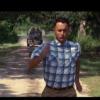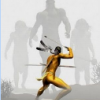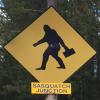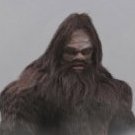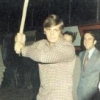Leaderboard
Popular Content
Showing content with the highest reputation on 04/11/2014 in all areas
-
You don't really read other people's posts entirely, do you? I've already provided you with facts, not assumptions. This makes it very difficult to have a logical dialogue with you when you rant about something, I reply with more than sufficient factual information to counter your argument, and you come back ranting as if you've only read, or perhaps understood, half of the information provided to you. I'll make one last attempt by repeating the information I have previously provided. If you persist in not reading it fully, then I see no further point in dialoguing with you. The three mummified skeletons were discovered in a cave near Walker Lake, Nevada by guano miners about the same time as the mummified skeletons from Lovelock Cave were discovered. Based on the artifacts found with them, they were from the same race of people that occupied Lovelock Cave, referred to by the Paiutes as Si-Teh-Cah. The three skeletons were placed on display at the Mark Twain Museum in Virginia City, Nevada for decades. The display consisted of a male skeleton, well over seven feet tall, a female skeleton seven feet tall, and a juvenile skeleton in the same mummified state, but under six feet tall. Keep in mind that this is two feet taller than the contemporary Paiutes. There were atlatls and atlatl darts displayed with them, as well as other artifacts including woven partially decayed woven baskets, etc. They had decayed clothing consisting of coarsely woven plant fiber. There was still hair attached to the remaining skin, not just on their heads, but also on their arms and shoulders, where it was about two inches in length. The hair was red, as it was with the Lovelock Cave remains. I personally viewed the remains several times between 1969 and 1978. In 1991, I visited the Museum and they were gone and I assumed that they had been repatriated by the Paiutes. In 2011 I decided to try and track them down. I visited the Museum in Virginia City and the Nevada Historical Society adjacent the the UNR campus. I finally learned that the remains were not repatriated by the Paiutes (the Paiutes are adamant that the remains are from the race of cannibals with whom they warred and eventually wiped out). The big revelation was that it was BLM who took the skeletons. I do not believe that the remains are bigfoot remains, but they do appear to be from the same race of people whose remains are reported from different areas the country. These people continued to use atlatls long after all other tribes were using bows, which makes sense because their longer arms would have provided greater power and range with atlatls than the bows used by shorter peoples. Also a large bow, sized to them, crafted from the same materials used by other tribes would not have withstood the force of a longer and stronger pull. Si-Teh-Cah, by the way, means stick thrower people. This is consistent with the use of atlatls. So, in a nutshell. Remains of three large individuals from an uncatalogued race of people two feet taller, on the average (males between seven and eight feet), than the contemporary natives were on display. The government got hold of them. They are no longer available to the public. This is exactly what Thomas Powell, the first Director or the Smithsonian's Bureau of Ethnology, was trying to suppress. The "unwise", as he called it, use of the anthropological information acquired by researchers at the time included links to what Powell referred to as "tribes of antiquity" from the Old World. If this information became widely accepted it would have threatened Manifest Destiny. He was worried that the public may begin to view some of the native peoples as descendants of European tribes mentioned in the Old Testament and that this would bolster the theological assertions of the people settling Utah at the time, with whom the government was at odds.3 points
-
Well, I can say first hand that BLM has in its possession three large skeletons. See them on display anywhere? They were on display before BLM confiscated them. The Smithsonian's policy is not a matter of conspiracy theory. It is a matter of record. Thomas Powell, the first Director of the Smithsonian's Bureau of Ethnology objected to any interpretation of anthropological finds in the US that elevated Native Americans beyond the most primitive interpretation. He suppressed the findings of researchers that he defined as "unwise", and discouraged continued research into the mound building culture. I repeat, not a matter of conspiracy, a matter of record. There were four reasons he did this: To support Manifest Destiny, the right of European immigrants to take possession of the entire continent. To manage public perception of Native Americans as "less than", to minimize objection to their relocation. To suppress any evidence of pre-Columbian contact between Native Americans and "People of Antiquity" To prevent any evidence of pre-Columbian contact from being used to support a growing faith in the West whose prime tenet was based on pre-Columbian contact with a "person" of antiquity.2 points
-
What an opportunity. If you were to go out there and video branches knocking together in the wind with enough force to approximate what people are mistaking for BF wood knock you could put that whole phenomenon in the dust bin. Should be doable since you claim to hear it nearly every time you go out there, even in the park down the street. It would be a good thing to back up the kind of claim your making here because on the surface it seems to very dismissive of the abilities of others on this board to be able ti distinguish between every day sounds in the woods and a sound made by a possible Bigfoot. It might just be the way I took it but what you say above seems to qualify as an extraordinary claim.1 point
-
I of course examined the possibility of a bear- first thing I looked for was a snout, of which it was pointedly absent if you will pardon the expression No way that was a bear; the thing that one has to keep in mind was the pose, which was one no bear can do. I also have trouble with the idea that a bear is not going to take a look at you as you approach. That the creatures I saw made a point of not exiting their pose, which says a lot about them (no idea what they were doing there in the first place, but); it was a conscious act. Imagine how hard it would be to sit in the road and not look at a car coming at you! I agree- if you don't consider other possibilities how can you rule them out? So I made a point of it when I was sitting in the truck. Bear- no, moose?- no, Buffalo- no, get real, etc. What I saw was a creature that is best described by the descriptions I see of BF. That pose though, I don't know of any other creature that can do that.1 point
-
Alex, in your estimation are the bigfoot corporeal, physical creatures? If so, how then to explain the utter lack of physical remains? Per you and Coonbo, it seems one couldn't swing a dead cat without striking one of the creatures.1 point
-
1 point
-
In the interest of assisting in this endeavor, I would like to offer some constructive criticisms and suggestions. I think I can offer some unique insights into this matter as I am one of the rare, fortunate few who have actually been behind closed doors at the Smithsonian to conduct research, albeit in a completely non-related field. First I will relate my constructive criticisms and then tell of my own experience, and others can glean from it what you will. In my experience HF you are hitting the nail on the head, but unfortunately didn't take it quite far enough. I would strongly suggest you do some research on the Smithsonian’s website and find the specific curator who would be most likely be in a position to assist you and contact them. A generic "to whom it may concern" will most likely get you an equally generic response. In their eyes, you have already lost traction as a serious researcher because you couldn't be bothered to find the specific person you need to talk to, or had been possibly been recommended by one of their peers. Indeed, they receive hundreds if not thousands of inquiries per year, and a variety of underlings are tasked with filtering out those inquiries. As incredulous as it may seem, they are underfunded and understaffed as most museums are, and this being "THE" museum of the western hemisphere, they plain do not have the time to answer fully every off the wall inquiry or request. To JDL, I can understand how the average person would conceive an idea such as you have. I don't mean this as a personal swipe or insult, but your idea is in some ways putting the cart before the horse and, quite frankly making the situation far more complicated than it is. The initial thing to do is establish if these artifacts exist or if they are willing to entertain said research. The reality of the situation is, most museums and archives are quite easy to get into if you demonstrate you have some sense and actually bother to apply yourself. Keep in mind, most of these facilities are publicly funded, and in a sense, belong to "we the people" and are there to serve us. Their stated mission is generally to educate, and many curators are more than happy to be of assistance if for no other reason than to talk about their favorite subject with someone else. Admittedly though, others are not so inclined, and will purposefully erect barriers to avoid having to deal with the public. The Smithsonian (at least in my experience) was initially more of the latter, and I just happened to get lucky in the end. They are a federal bureaucracy after all with a lot of disinterested staff. I do a great deal of work as an independent researcher and about a year ago wanted to see what artifact holdings the Smithsonian had in my field of interest. I prowled the internet and found the name of the curator who was most likely able to assist me and emailed her directly. I kept my message fairly brief and to the point of what I was looking for and who I was. She responded within the next day or two and said yes, they had some artifacts that would be of interest to me. I then set up an appointment with her (at a date and time convenient to her) and within two weeks I went to meet with her. There were no background checks, no ID submitted, no pedigrees asked for...nothing. I should point out the items I was seeking to look at are exceptionally rare and valuable, not common garden variety objects found just anywhere. I entered the meeting with a professional demeanor and prepared to do my work. While examining the artifacts, conversation naturally ensued and I was thereby able to demonstrate I was knowledgeable about the topic (more-so than the curator herself) and "worthy" of being granted access. I use the term "worthy" because I was soon to discover that those given access to the collection are somewhat arbitrarily and subjectively chosen. As the details of my mission unfolded (I was seeking to make museum quality reproductions of the items I was looking at) the curator confessed that had she known what I was wanting to do, she would have never granted access! Not because I wanted to replicate them, but because so many goofballs and wackos are in my field of study, they summarily dismiss them because the staff doesn't want "those people" wasting their time! She further admitted that she thought I had been given her name by a peer of hers, and thus thought I would be okay to allow in; even though at no point had I stated or even implied such. All is well that ended well, I went back for another two visits to complete my work, confident that I had established myself as a serious researcher in her eyes. As it turned out, in a conversation with one of my peers, he was incredulous that I had gotten in, as he had been denied access for over 20 years, and even been told that 'no, we don't have any of that stuff.' Again, this was in a completely unrelated field to BF or any other kind of paranormal or controversial study, so charges of a conspiracy to suppress information do not apply here. In the end, my general observation was that luck is the biggest determining factor. By and large, the staff at the Smithsonian for one reason or another don't want to fool with average researchers, but MAY on occasion allow it. It as much seemed to revolve around finding the right curator who just happened to be in a good mood that day to allow me in. Granted, this may just be the pervasive attitude in the department I was dealing with, but I wouldn't be surprised if it is not an across the board type mindset. So hopefully this has been of some assistance and I sincerely hope you can get a positive response from them, though I wouldn't hold my breath.1 point
-
The store won' t let me return the chunk of coal I got for you.1 point
This leaderboard is set to New York/GMT-05:00

